- Home
- Patrick Robinson
Nimitz Class (1997) Page 28
Nimitz Class (1997) Read online
Page 28
Admiral Bergstrom, himself a SEAL veteran, made a key recommendation here. “I don’t think we need ‘blow’ the third Kilo at all,” he said. “If we could somehow smash all four shores on her starboard side, she’d crash down on her own, probably take out the entire wing wall of the dock, and possibly drive her way straight through the floor. Two and a half thousand tons is a pretty good weight to drop—it would certainly smash the dock to pieces, and put the whole lot on the bottom of the harbor with very little explosive effort on our part.”
“Yes,” replied Commander Ray Banford, “but those things are damn finely balanced. She may not fall immediately, and the noise we make blowing the shores might just alert them, maybe give ’em time to bang in another shore if they happen to have a few spares around. Just one could stop her falling.”
“She’d go if I blew a damn great hole in her starboard holding tank at precisely the same time we took out the shores,” said Lieutenant Bennett. “I guess the slightest tilt of that dock would do it. And that big float tank, full of seawater, would tilt her over half a degree in about one minute flat. She’d go then.”
“Yes, I guess she would,” said Commander Banford. “Actually I think our real problem here is the amount of guys we might need to get those shores out.”
“One man on each,” said Rusty. “That’s four. I’ll go in first, under the dock, and attach some kind of a mine to the tank. Then I’ll stand guard while the guys wire up the shores. We’ll use det-cord. We’ll hook up the explosives to the same detonator, give ourselves time to get clear, and the whole lot will blow together. She’ll go. No doubt, she’ll go.”
“Right here, we’re talking a lot of guys,” said Banford, the exsubmarine commander, who would oversee the mission. “We need four men for the floating Kilos. Four for the shores. Couldn’t two guys do two each?”
“Too dangerous, sir. Don’t forget we’ll be working close to the guard on the deck of the submarine, but just out of his sight-range. If he hears one sound he’ll start looking, then I’ll have to take him out, then someone else might hear, then we’ll end up taking a dozen of ’em out, with all hell breaking loose.
“No, sir. I think we should move at twice the speed, with four men, one on each shore working simultaneously.”
“Yes, Rusty. I do see that, it’s just the number I’m worried about. Four men on the two floating Kilos, four men on the shores, you blowing the float tank and standing guard—that’s nine, plus the driver of the SDV. That’s ten, and the SDV only holds eight.”
Admiral Bergstrom spoke next. “Well, Ray, we do have a new Swimmer Delivery Vehicle, delivered in the past few weeks. It does hold ten. They call this one an ASDS, an Advanced Swimmer Delivery System, electric-powered, made by Westinghouse. It has a longer range than the old Mark VIII, probably twelve hours, and it does hold ten guys.
“If you assume three hours to get in and three hours back, plus four hours waiting, that’s ten hours, if nothing goes wrong. She only makes five knots, but she’s nearly perfect for us. Trouble is, I don’t know whether she’s operational yet. And I believe we only have two SSN’s fitted to carry her…. Tommy!” He beckoned over to Lieutenant Tommy Schwab, asked him to check out the submarine situation with SUB-PAC, Vice Admiral Johnny Barry, Commander, Submarine Force, Pacific Fleet.
Meanwhile they agreed in principle to a ten-man team. And Lieutenant Rusty Bennett then threw another curve ball. “I think we should blow the boat in the dry dock at the earliest possible time,” he said. “It is likely they will have a sentry patrolling the walkway around the top of the floating dock. If we leave that det-cord in place for one and a half hours while we get away, he’s got a good chance of spotting it if he’s sharp. He only has to notice it on one of the shores and they’ll find the whole detonation network and cut it.
“I think we should set the det-cord to blow ten minutes after we hit the water. We’ll be a few hundred yards away by then, and we’re not talking huge underwater explosion, just the minor blast on the float tank. That won’t affect our eardrums. The rest of the explosives are high up in the dock, and the damage is going to be slow motion, zero-blast underwater, all in the same place.
“If we just let the submarine crash through the dock, they won’t even suspect they were hit by anything military. And there will still be chaos in the base when the other two Kilos blow. We can set them to go two hours after we leave, by which time we’ll be back in the SDV and well on our way across the bay. I’m figuring they’ll want an hour to get their act together and come after us with a patrol boat. We’ll be in the SSN before they get a sniff.”
“Good thinking,” said the admiral. “It sure would be goddamned irritating if we set the whole thing up and then they found the det-cord before we blew out the shores.
“One question…have you guys thought yet how you’re going to work up high, on the side of the submarine? I mean A, how are you going to get up there? B, how will you avoid being seen? And C, what protection do you have?”
One of the senior instructors, a Chief Petty Officer, stepped forward. “According to these drawings we have here, the shores will be positioned about thirty feet from the floor of the dock,” he told the group.
“Well, we can’t climb the curved sides of the submarine, nor can we risk going up onto the walkway around the top of the dock. So we have to go straight up a rope to each shore. We’ll use fairly thick black nylon, with a big foothold knot every two feet, and a small, padded black steel grappler on the end. The guys will twirl and throw the grapplers from the floor, up and over the beams. When the hook grabs and digs into the wood, they go, straight up, and straddle the beams.
“They’ll work close in, maybe five or six feet from the hull of the submarine. That way the sentry cannot see them without crawling right down over the edge, in which case he’ll fall off. Most likely he will be in a chair, possibly asleep, right in the middle of the deck, under the bridge, looking aft.
“Most of these big floating docks have steel ladders at the ends and one about halfway along the wall which goes from the floor up to the walkway. Rusty will position himself as far up there as he needs to be, just enough to train his sights on the sentry’s head. Rusty’s gun will of course be silenced.
“The guys will wind the det-cord around the beams probably about six times, that means they will each want about forty feet of the stuff up there, with another forty feet hanging down and another eighty feet to connect to the next beam. Our stuff is dark green in color, and det-cord’s not too heavy. It’s thin, and we can wrap it tight. It’ll be awkward swimming in, but we’ve done much worse.
“I estimate the guys will be up on the wooden beams for no more than four minutes. Rusty can make the joins, and fix the detonator and timing mechanism as soon as he gets down the ladder. He says ten minutes, maximum.”
“Thank you, Chief,” said the admiral. “You starting practice today?”
“Nossir, I’m fixing up for us to use AFDM-14, the big floating dock right here in San Diego. They have a submarine in it right now, on shores. I thought we’d spend two days over there, by which time this team will be world experts with a thirty-foot throw with rope and grappler.
“Most of them have done it before, sir, but we must eliminate every possibility of a mistake. What we don’t want is for one of those ropes to fail to fetch the beam, because then the damned grappler will fall and thump on the steel floor of the dock, and then Rusty may have to kill the goddamned sentry.”
“Guess so, Chief…”
Just then the door flew open and Lieutenant Tommy Schwab rushed in. “Sir,” he said, “we just got lucky. Real lucky. The SSN we want is one of those old Sturgeon Class boats, L. Mendel Rivers. She’s recently been converted to take the new ASDS. She was one of the two SSN’s with the Thomas Jefferson, and she’s in Diego Garcia right now.”
“Perfect,” said the admiral. “What about the ASDS?”
“Yessir. She’s about ready for ops, but she’s still ri
ght here in San Diego. So we’ll have to fly her out in a C5A with the SEAL team. But the Mendel Rivers is ready and waiting, being serviced right now. We’re all set.”
“Now that’s great,” replied Admiral Bergstrom. And turning to the Chief Petty Officer in charge of training, he said, “We can get the SEALS familiarized with the new vehicle right away. When do you reckon they’ll be ready to go?”
“Well, we have swimming and weight tests, plus the rope training. Weapons testing. A couple days’ instruction on operating ASDS. Plus a day coordinating everything. They’ll be ready to fly out next Thursday night on the regular Navy flight out to DG, you know, the old C5A Galaxy right out of San Diego.”
“Well done, Chief. Couldn’t be better…oh, Tommy, call CNO’s office and make sure he’s told about all this, will you? Top secret. He’s waiting.”
“Aye, sir. Thursday night flight, right?”
At this point the broad plan for the mission was formally approved by Commander Banford. Rusty Bennett routinely informed his men they were now, officially, in isolation. Phone calls were banned, even to wives and children. No letters could be written, not even postcards. No faxes, no fraternizing with anyone not involved with the planning and training. In that way, there was no chance of anyone, however unintentionally, compromising the mission.
The men were permitted to update or write their wills, and these would be held in the SEAL archives until their safe return. Or failing that, they would be pronounced legal by the Navy.
Rusty Bennett spent the first evening in conference with his whole team, thinking it through, measuring accurately on the charts all of the distances. In particular the navigational plan for the ASDS—from the Mendel Rivers to its waiting position outside the port of Bandar Abbas. His second-in-command, referred to as 2IC, a lieutenant junior grade, David Mills from Massachusetts, sat in on these meetings, since he would drive the miniature submarine in while Rusty navigated. The other eight men would sit behind them, in the dry but cold air, breathing through tubes connected to a central air system in the ASDS, as it crawled slowly and silently through the ocean, fifteen feet below the surface.
The sea miles were plotted with immense care. Rusty Bennett himself called out the information…“Total distance SSN to ASDS waiting position at 56.12E, 27.07N…is 12.93 miles…course three-three-eight…two hours and thirty-five minutes at five knots…add thirty minutes for the launch…at ten and a half miles there’s a red flashing light every seven seconds marking a long shoal to port…water’s only about twenty feet deep in there…if we see the light we’re plenty close…it should be about 750 yards off our port beam as we pass…we don’t want to be way off course on the right either, because there’s a wreck marked there—in about thirty feet of water very near the inward channel.”
Rusty Bennett was in fact never off course, having been brought up in his father’s lobster boat, creeping his way through the fog that often blankets those enchanted pine-tree islands off the Maine coast. Rusty Bennett was reading ocean charts when most kids were still busy with Mr. Rogers. His father was a native of the outward island of Monhegan, and his mother’s maiden name was Lunt, the famous Down East family that ran the boatyard and lobster fleet out of Lunt Harbor, Frenchborough.
The sea was in this particular SEAL’s blood for generations. And he came from a cold, dangerous northern sea, in which the big marker buoys, with their chiming navigation bells and flashing lights, were often the only means of avoiding a catastrophic loss of bearing and direction. Miss one of them in bad weather, and death might be staring you in the face. Unsurprisingly, Rusty Bennett was one of the best navigators the SEALS had ever had.
Every time he spoke, someone took down his words. By the time he turned his attention to the Iranian submarine base, there were two note-takers, one Senior Petty Officer double-checking every figure, and another following Rusty’s progress on a second chart…checking, checking, checking. Another man on the computer keyboard was entering the navigation plan in a file now marked “Operation Vengeance.”
Rusty Bennett kept talking. “Probable distance from ASDS anchorage to right-side harbor wall…five hundred yards…bearing two-eight-four…there’s a green navigation light on that wall…we may even see it. Right there we turn right…bearing zero-zero…heading for the inner harbor…thirteen hundred yards…this wants counting carefully…because we make a right there…that’s two hundred yards beyond a second green light…this one flashing quickly…water’s only about nine feet deep in here close to the wall…after that second right turn we swim for a thousand yards on a nine-zero bearing…right there we should be outside the floating dock…five of us bail out there and get up on it…possible four-or five-foot climb….
“The other four keep going on bearing…the Kilos berthed either side of the jetty will come up inside 50 yards…total swim distance in is thus 2,800 yards…it’s gonna take us one hour to swim that, then we’ve got 160 yards further to go…allowing for nav stops…say ten minutes…that’s seventy minutes from exit ASDS to the dock.”
They finally wrapped it up just before 2300, and headed thankfully to bed. The chief who ran the training program wanted all five of the dock team ready to leave for the San Diego base by 0630 the following morning. Rusty mentioned that since he wasn’t throwing the grapplers over the shores, maybe he was unnecessary. The chief’s reply was curt. “What if someone gets hurt, and you’re not sure about getting the grappler over, first time, sir?”
“Yes, guess so. But who would cover the guys then?”
“That’s SOP, sir. Either your wounded man can get up the ladder to do it, or you shoot the fucking Iranian guard, nice and quiet, before you start.”
“Oh yeah, right, Chief.”
Shortly before 0700 the next morning, the Navy jeep drove onto the jetty alongside the huge floating dry dock, Steadfast, positioned deep inside the San Diego base. Six men jumped out of the vehicle, and immediately the chief began to speak. “Now, you can all see the size of it, right? The wing walls are 83 feet high, and close to 260 feet long. I should think the one in Bandar Abbas is nearly identical, because a Russian Kilo is 242 feet long.
“See those two cranes high up, on top of the wall? Well, they can lift thirty tons and you find them on top of all floating docks. Also up there you are going to see a control tower, and in there you may see a guard and an operator, or just an operator who doubles as a guard. In front of him are the hydrovalves and flooding systems, and he has a set of illuminated dials which show him the angles of the dock in the water.
“They are really just like spirit levels. Theoretically, when Rusty blows a hole in the starboard-side ballast tank, the dock will begin to tilt. What we don’t want is for the guy in the tower to notice something very early and then compensate for the list on the dock by flooding the opposite tank as well. But I don’t think he will have time. A little later, we’ll give that a bit more thought, and then we’ll go up and act out the scenario a few times ourselves, just to see what might happen and to get accurate times.
“Meantime, let’s get into the dock, and see how good we are at hurling the grappler ropes up and over the shores.”
All five men took their rope coils out of the jeep and headed for the engineer’s platform which was moored on the stern of Steadfast. They crossed from the jetty, and walked into the floating dock, all of them for the first time. From water level it looked massive, and so did the submarine propped up inside. They stood alongside the boat, and above their heads they could see the big wooden shores, four of them in a line, about thirty feet above the steel deck.
The trainer told them the secret of standing at least twenty feet in front of the unseen perpendicular line from the beam down to the floor. “That way, you pick your angle, and throw the rope up, underarm, in a dead straight line, making sure it goes above the beam. That way when it drops, it must come down on the far side, and then you just pull, and the grappler will come up and dig into the wood. You want to give it a good
jolt, but nothing too loud.
“The trick is to learn to twirl the hook in a large circle, clockwise as you look at your right hand. You need to know exactly when to let go. That’s just practice. Okay, Lieutenant Commander, show ’em how it’s done….”
Rusty got into position, and began to whirl the hook around until the noise made a hum in the air. He gazed upward and let go. Too low. The grappler flew twenty feet above the ground like a rocket at least ten feet below the beam and crashed down onto the deck with an unnerving, echoing thump and clatter.
“Well, sir, I’d say you just came up with a pretty good way of getting all five of you killed right there,” said the chief. “I said you needed practice and that’s what you’re gonna get.”
One by one the SEALS aimed their hooks up and over the beam; only one made it the first time, but he missed the next time. Seven hours later they were still there, and the standard was now almost flawless.
“In the end, it’s like riding a bike,” said the chief. “Once you know how, you never forget. I’m getting pleased with you, but I shall want each of you gentlemen to throw six perfect passes over the beam, one after the other. Anyone misses, you all start again, until we get thirty passes all sailing over. No mistakes.”

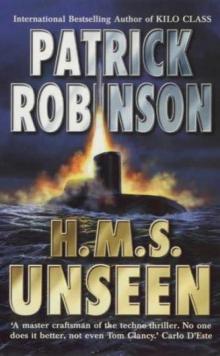 H.M.S. Unseen am-3
H.M.S. Unseen am-3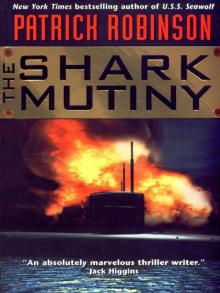 The Shark Mutiny (2001)
The Shark Mutiny (2001) Hunter Killer am-8
Hunter Killer am-8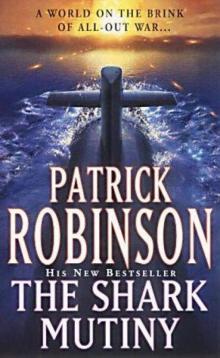 The Shark Mutiny am-5
The Shark Mutiny am-5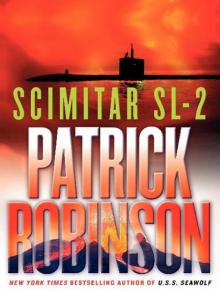 Scimitar SL-2
Scimitar SL-2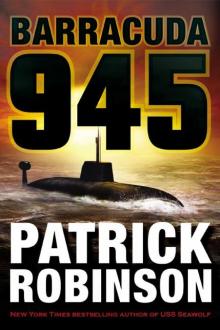 Barracuda 945 am-6
Barracuda 945 am-6 Hunter Killer
Hunter Killer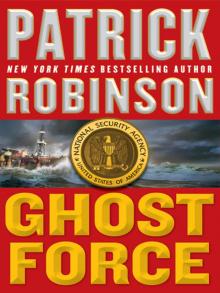 Ghost Force
Ghost Force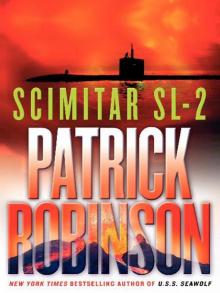 Scimitar SL-2 (2004)
Scimitar SL-2 (2004) Kilo Class am-2
Kilo Class am-2 The Lion of Sabray
The Lion of Sabray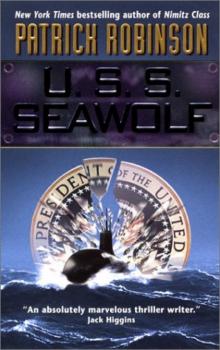 U.S.S. Seawolf am-4
U.S.S. Seawolf am-4 Ghost Force am-9
Ghost Force am-9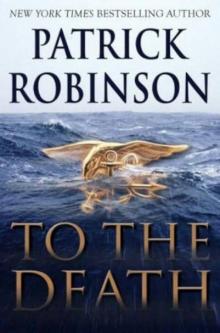 To the Death am-10
To the Death am-10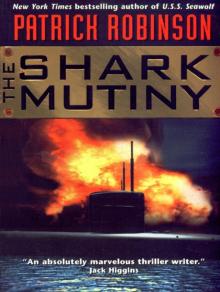 The Shark Mutiny
The Shark Mutiny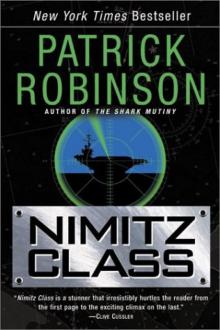 Nimitz Class am-1
Nimitz Class am-1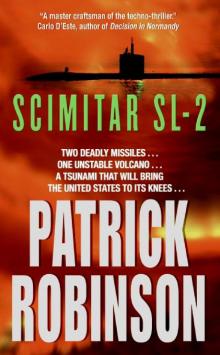 Scimitar SL-2 am-7
Scimitar SL-2 am-7 Barracuda 945
Barracuda 945 Intercept
Intercept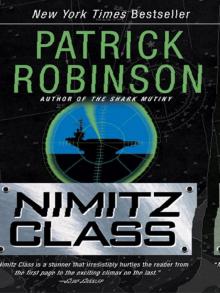 Nimitz Class (1997)
Nimitz Class (1997)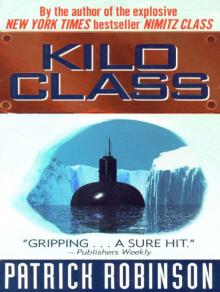 Kilo Class
Kilo Class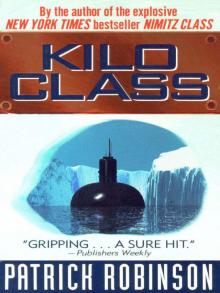 Kilo Class (1998)
Kilo Class (1998) Diamondhead
Diamondhead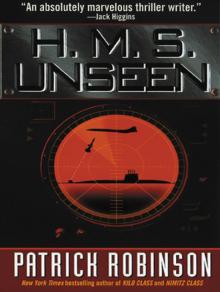 H.M.S. Unseen
H.M.S. Unseen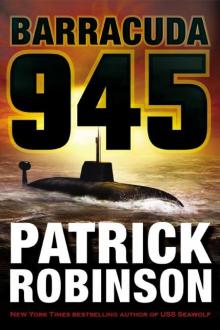 Barracuda 945 (2003)
Barracuda 945 (2003)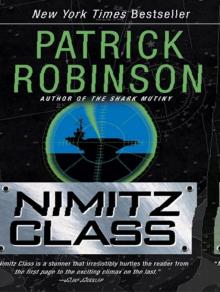 Nimitz Class
Nimitz Class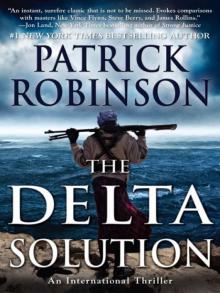 The Delta Solution
The Delta Solution U.S.S. Seawolf
U.S.S. Seawolf